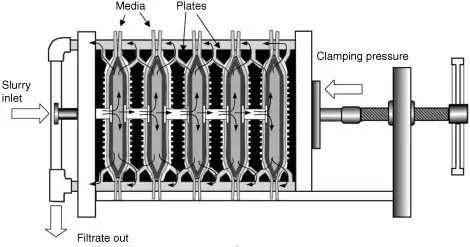
chamber filter press
1.Tailored solutions to meet diverse process needs and specific customer requirements.
2.Highly configurable with maximum flexibility.
3.Compact and sturdy design ensures flawless and reliable filtration operations.
4.Enhanced safety through the implementation of cutting-edge security techniques.
5.Excellent value for money with a favorable price/performance ratio.

chamber filter press-High-efficiency filter press
A chamber filter press is a widely utilized filtration system in various industries for effective solid-liquid separation. It is particularly popular in wastewater treatment plants, mining operations, chemical industries, and food processing facilities. This system forces the liquid to pass through the filter cloth while retaining solid particles within the chambers.
The fundamental structure of a chamber filter press consists of a series of filter plates with filter cloths, arranged alternately with solid plates. Depending on the application and the nature of the material being filtered, these plates are typically made from materials such as polypropylene, cast iron, or stainless steel. Each plate features a central cavity or chamber where solids accumulate during the filtration process.

What is the working principle of chamber filter press?
1.Feeding stage: First, the mixture to be treated is pumped into the chamber filter press. This mixture is usually solid particles suspended in a liquid medium.
2.Filtration stage: The feed liquid enters the chamber formed by the filter plate through the feed pipe of the filter plate. The filter plate is covered with filter cloth to form a filtration area. When the feed liquid flows through the filter cloth, the solid particles are intercepted by the filter cloth, forming a solid residue layer in the chamber.
3.Pressure stage: When the filter chamber is filled with the solid residue layer, the filter press begins to apply pressure, usually through a hydraulic system or a mechanical pressure device. The applied pressure forces the liquid in the chamber to pass through the filter cloth, while the solid particles remain on the filter cloth to form a solid residue.
4.Discharge stage: When a certain level of pressure is applied, the filtrate is discharged through the filter cloth, while the solid residue remains in the filter chamber.
5.Solid collection: The solid residue accumulates in the filter chamber until it needs to be cleaned. If necessary, the operator can open the filter press to remove the solid residue from the filter chamber.
Advantages of Jingjin Chamber Filter Press
1.High Filtration Efficiency: Utilizing advanced filtration technologies, including precise filter cloth alignment and optimized plate design, to achieve efficient and effective filtration results.
2.Robust and Durable Construction: Filter plates are made from high-strength polypropylene or other corrosion-resistant materials, ensuring longevity.
3.Excellent Sealing Performance: Equipped with reliable sealing systems to prevent leakage and maintain consistent pressure throughout the filtration process.
4.User-Friendly Operation: Automated or semi-automated control systems simplify operations and reduce the need for manual intervention.
5.Wide Range of Applications: Customization options are available to tailor the filter presses to specific process requirements.
Filtration Principle
The filter cloth serves as a medium that permits liquid to pass through while retaining solids, resulting in the formation of filter cakes within the chambers and the collection of filtrate, enabling effective solid-liquid separation.
1.Filtration: The chamber filter press applies pressure to the slurry using either hydraulic or mechanical means, forcing the liquid portion to pass through the filter cloth while retaining solid particles within the chambers.
2.Cake Formation: As liquid passes through the filter cloth, a layer of solid particles, known as the filter cake, forms on the cloth’s surface within each chamber.
3.Filtrate Collection: The liquid portion, or filtrate, passes through the filter cloth and is collected in a drainage system or collection channel.
4.Cloth Cleaning: Over time, filter cloths may become clogged with accumulated solids, reducing filtration efficiency. Periodic cleaning or replacement of the filter cloths is necessary to maintain optimal performance.

Applications of Chamber Filter Press
1.Wastewater Treatment: Widely used in municipal and industrial wastewater treatment plants to reduce sludge volume for disposal and achieve cleaner water.
2.Mining and Minerals: Employed in the mining industry for dewatering mining slurries and recovering valuable minerals, facilitating the handling and disposal of solid waste, and enabling water and mineral recovery.
3.Chemical Industry: Enhances product quality, reduces waste, and improves process efficiency in chemical manufacturing.
4.Food and Beverage: Utilized for various applications, including the removal of solids, particles, and impurities, ensuring product clarity and quality.
If you are interested in our products, please contact us !
